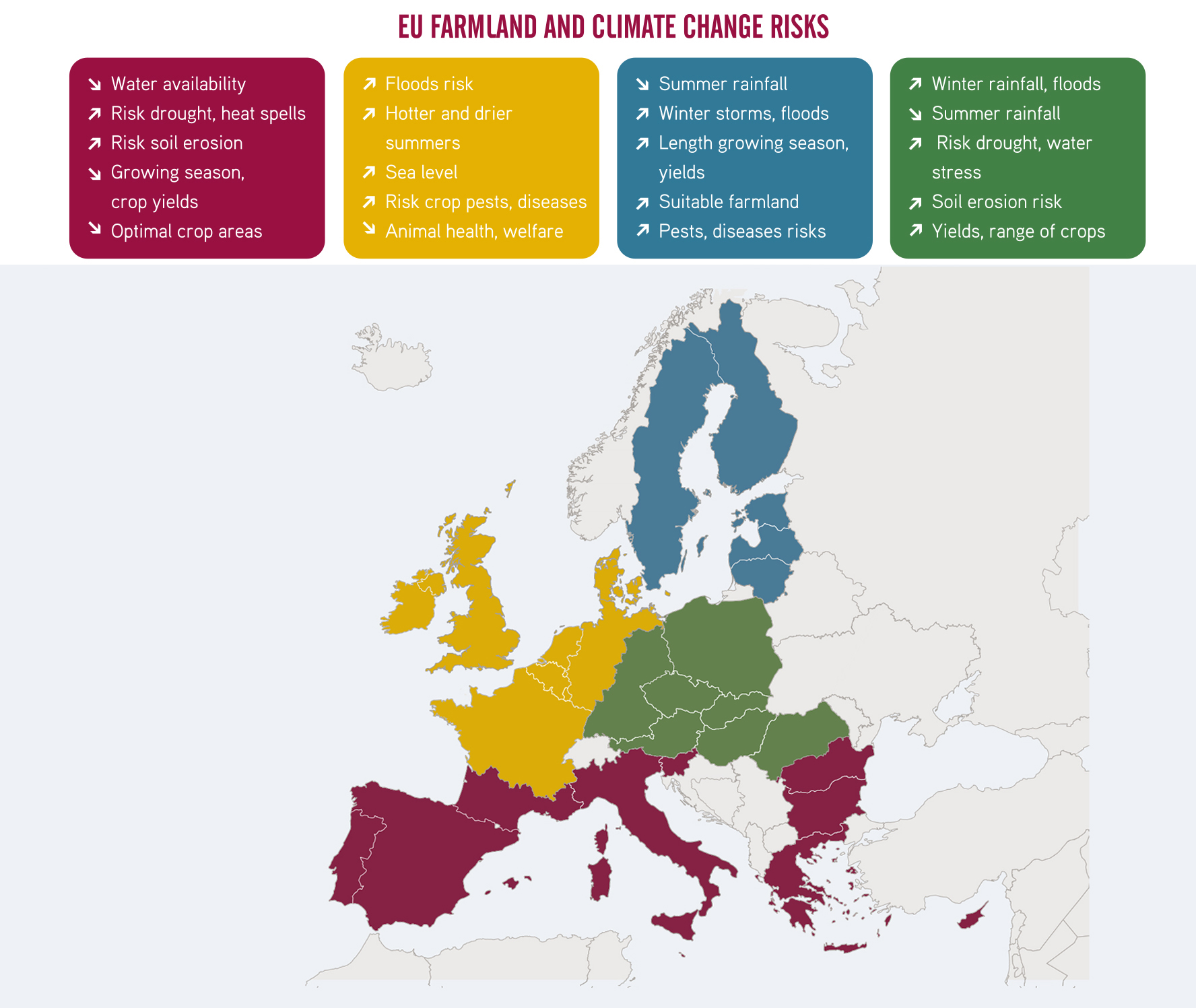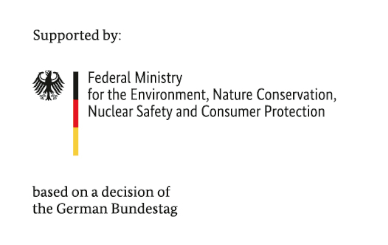AWA - AgriAdapt Webtool for Adaptation
One of the main challenges facing the world, and the agricultural sector in particular, is climate change. Even if some of the changes in climate could be beneficial for some European agricultural production, most of the changes have had negative impacts and disproportionately affect regions already concerned by other environmental problems. European farmers have and will have to adapt to a changing climate, through measures that go beyond simple adjustments to ad hoc practices. In order to limit the vulnerability of their farms to increasingly variable climatic hazards, adaptation must first of all be designed and undertaken in a sustainable manner.
It was in this context that the European AgriAdapt project was born, supported by the LIFE program of the European Commission. It brings together French, Spanish, German and Estonian partners, who represent four areas constrained by different climatic risks.

The objective of the AgriAdapt project is twofold: to assess the vulnerability of the main European agricultural products to climate change; but also to propose sustainable adaptation plans allowing these systems to become more resilient. This AgriAdapt webtool for Adaptation aims to highlight the main results of the monitoring of more than 120 pilot farms in 4 countries, by sharing them with the largest number of users in Europe.
The discovery of 3 successive modules is proposed to strengthen its agroclimatic knowledge and be able to support more resilient agriculture.

Farm vulnerability and adaptation Quiz
Through around thirty different questions, you will be able to test your knowledge of climate change, agricultural impacts of the climate on different agricultural productions and possible adaptation measures at farm scale.
4 different quizzes are offered, each corresponding to the geographic location of the 4 countries involved in the project (France, Germany, Spain and Estonia), all representative of a major climatic influence in Europe: Mediterranean, Atlantic, continental, and Nordic areas. Each quiz is systematically available in English as well as in the language of the country it represents.
For each question, one or more correct answers are possible among the 4 proposals. Just click on your choice (only one possible) to know if your answer is correct. An explanation will then appear at the bottom of the screen and you can deepen the subject even further if you wish by clicking on "Learn more".
At any time during the quiz, you can continue to the next question if you do not wish to answer any of the questions. Once the quiz is finished, a summary will indicate the number of correct answers obtained for each of the 3 categories: climate change, agricultural impacts and adaptation measures.

Yield & Climate (observations and projections)
This module consists of a map entry proposing the consultation of agronomic (yields) and climatic (observations and projections) data for different geographic locations throughout Europe.
Just move the map to the area of interest, then zoom in to more accurately identify the place you are flying over. Each small orange square (or grid point) on the map then lets you view local data with a single click.
For each grid point, a compilation of annual yields from different crops (2000-2017 period) first shows the variability in performance in terms of yields. Then, the description of the past climate (observations for the period 1987-2016) is presented through different graphs for several variables: temperature, precipitation, number of days of freezing, etc. Finally, climate projections illustrate in the form of 10 graphs the climate changes for the near future period (2017-2046), then supplemented by 19 agro-climatic indicators specific to arables crops, fodder, animals, vineyards and orchards.

Sustainable adaptation measures

This module is devoted to sustainable adaptation measures that can be envisaged at farm scale. The agro-climatic vulnerability of a farm often depends on several climatic factors, so it is necessary to imagine the implementation of differentiated adaptation measures. Thus, for each of the 3 agricultural systems studied, sustainable adaptation measures are classified according to 4 components of farm vulnerability. For example, in arable crops, the measures proposed will seek to improve the resilience of the cropping system, the varieties cultivated, the water dependency or even the soil and farming practices. The implementation of a strategy for sustainable adaptation to climate change takes place over time.
The proposed measures are therefore distinguished according to the possibility of implementation in the short, medium or long term. For each adaptation measure, it is possible to know more by a simple click: a summary sheet then appears, offering an overview of its overall sustainability through its possible impact (neutral, positive or adverse) on a set of 9 components: emission of greenhouse gases, air quality, soil, water etc. The sustainable adaptation measures are specific to each of the 4 climate zones proposed. For each zone, the measures are systematically available in English as well as in the language of the country it represents.

Summary: adaptation process
The implementation of an adaptation strategy is a real learning process in which a progressive advance respecting several steps is necessary. First, defining and understanding the vulnerability of farming is a necessary prerequisite for any adaptation process. It is imperative to identify the weaknesses and / or climatic forces of the agricultural system currently deployed and to be aware of what climate change is and its agricultural impacts.
In a second step, agro-climatic projections for the near future period will offer a reading of new climate opportunities and / or threats defining the new context of the farm. The implementation of an adaptation strategy must therefore envisage improving climate weaknesses and threats to the farm, by mobilizing levers for a wide range of vulnerability components. Planning for adaptation measures must then be carried out to distinguish what can be implemented in the short, medium or long term.







